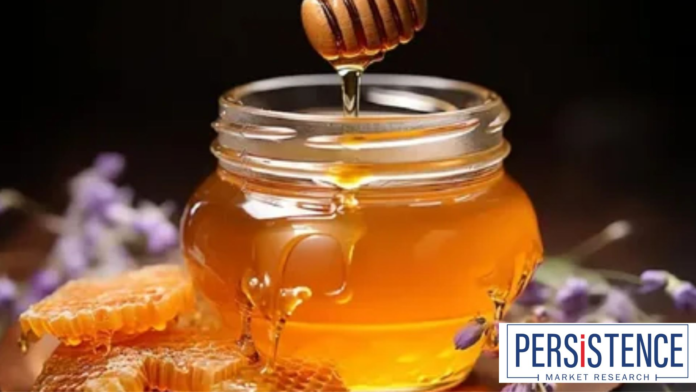Understanding What Organic Honey Truly Means
In today’s health-conscious society, organic honey has become a top choice for those seeking natural and chemical-free alternatives. But with shelves overflowing with brands claiming “organic” status, how can we be sure that what we’re buying is truly organic? This question has gained popularity among curious consumers who want to ensure that they’re not falling for misleading labels. To answer it, we must dive into what organic honey actually is and what standards it must meet.
Organic honey is produced by bees that collect nectar from flowers grown without synthetic pesticides, herbicides, genetically modified organisms (GMOs), or chemical fertilizers. Furthermore, the entire process—from foraging to bottling—must remain free from chemical contaminants. Yet despite these guidelines, many products on the market make “organic” claims without having any true basis for them. According to Persistence Market Research, consumer awareness around authentic organic labeling is increasing, forcing companies to become more transparent.
Certification Is Key: What Labels to Look For;
The easiest and most effective way to identify genuine organic honey is to look for third-party certifications. Reputable labels include USDA Organic, EU Organic, India Organic, and ECOCERT. These certifications are only awarded to honey producers who meet rigorous organic farming and beekeeping criteria. Certification ensures that the honey is harvested from bees that forage in pesticide-free areas and that the entire process—right down to the container—is eco-friendly.
However, not every jar labeled “organic” is certified. Some brands use terms like “natural,” “pure,” or “raw” to attract buyers, even though these do not indicate certified organic quality. Persistence Market Research has pointed out that brands with verifiable certifications are seeing stronger consumer loyalty and gaining competitive advantage in global markets.
The Role of Foraging Zones in Organic Honey
Another critical factor in determining the authenticity of organic honey is the foraging area. Bees typically travel several kilometers from their hive in search of nectar. For honey to truly be organic, the plants within this entire radius must be free from harmful chemicals and synthetic agents. This is easier said than done. One non-organic farm in the area can compromise the organic status of the honey.
This aspect makes the production of organic honey more challenging and expensive, but also much more trustworthy when done right. Responsible beekeepers map out these foraging areas and work with surrounding farms to maintain pesticide-free zones. According to Persistence Market Research, producers who manage and control the foraging range effectively are becoming major players in the premium organic honey segment.
Transparency and Traceability Build Trust
With food fraud cases on the rise, traceability is more important than ever. Genuine organic honey producers often allow consumers to trace their product’s journey from hive to bottle. Whether it’s a QR code or a batch number that links to farm-level data, this level of transparency sets reliable brands apart from the rest. Some brands even provide lab testing results to back up their purity claims.
These transparency measures are not just marketing gimmicks—they are responses to real consumer demand for accountability. People are increasingly choosing brands that provide clear sourcing information and production details. Traceability systems assure customers that the honey hasn’t been tampered with and that it aligns with ethical and organic standards.
How to Identify Fake Organic Honey
Even if a product looks and smells like honey, that doesn’t make it organic—or even real. Many counterfeit products are mixed with sugar syrups, corn syrup, or rice syrup, which mimic honey’s appearance and taste but offer no real benefits. In some countries, lab tests have revealed large percentages of so-called “organic” honey to be adulterated or contaminated.
To ensure authenticity, always check for lab-tested purity and certifications. Also, remember that real organic honey will often crystallize over time—this is a good sign! Honey that remains clear and runny for too long may have been heat-treated or diluted, stripping it of its natural goodness.
The Value of Lab Testing and Ingredient Checks
Some premium honey brands include independent lab test results on their websites or packaging. These reports check for harmful residues like pesticides, heavy metals, or antibiotics, as well as verify sugar content. Lab-verified honey offers a high level of assurance that you’re consuming a safe and authentic product.
By scanning QR codes or tracking batch numbers, you can often see full reports confirming the honey’s origin and purity. Choosing brands that offer this level of detail ensures you’re getting what you pay for and helps maintain trust in the broader organic market.
Country of Origin and Import Practices Matter
Imported honey often passes through several hands before reaching store shelves, increasing the risk of adulteration. Some countries are known for looser regulations or poor enforcement, making their “organic” labels less trustworthy. That’s why it’s important to know where your honey comes from. Choose local or certified international brands with strong reputations.
Governments are now tightening regulations, requiring importers to disclose more detailed information about their products. This increased scrutiny is beneficial for consumers and helps eliminate fraud from the supply chain.
Sustainability and Ethical Beekeeping
Organic honey is often tied to sustainable and ethical beekeeping practices. These include using natural materials for hives, avoiding harsh chemicals, and promoting bee welfare. Producers who truly care about the environment also support biodiversity and avoid mass-scale, industrial farming methods.
Consumers who want to make eco-conscious purchases should look for brands that not only certify their products as organic but also share their sustainability initiatives openly. The growing trend toward environmentally responsible purchasing is pushing more companies to invest in sustainable practices and cleaner production methods.
Organic Honey Market Trends: The Bigger Picture
The global organic honey market is expanding, fueled by rising demand for chemical-free, healthy alternatives. Consumers are becoming more educated about labels, certifications, and supply chain transparency. This shift is forcing producers to elevate their standards, and it’s also attracting new players to the market who are committed to authenticity.
In its latest market forecast, Persistence Market Research noted that consumer preference for clean-label and certified products is accelerating growth in the organic honey sector. The research suggests that brands with traceable sourcing and transparent labeling are set to dominate the market in the coming years.
Not all honey labeled “organic” is truly organic, but with a bit of knowledge, you can learn how to spot the difference. Check for certifications, ask about the source, look for lab tests, and stick with trusted brands that value transparency. When in doubt, a little research can go a long way in ensuring that the product you choose is pure, ethical, and truly organic.
By staying informed, you’re not only protecting your health but also supporting environmentally responsible beekeepers who are making a real difference. The organic honey market is maturing, and as Persistence Market Research concludes, consumer awareness and demand for authentic products will continue to drive the industry forward.









